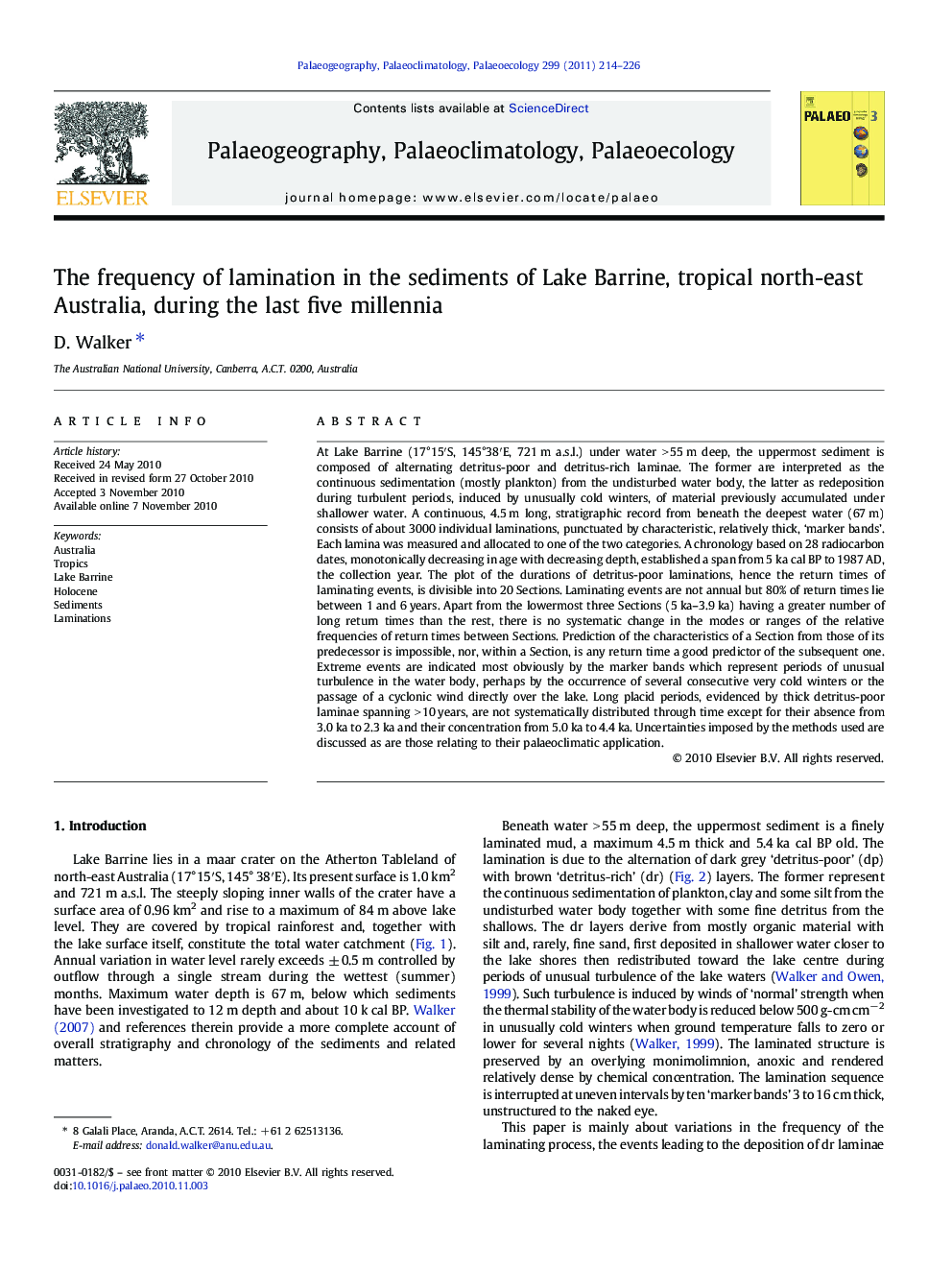| کد مقاله | کد نشریه | سال انتشار | مقاله انگلیسی | نسخه تمام متن |
|---|---|---|---|---|
| 6350687 | 1622265 | 2011 | 13 صفحه PDF | دانلود رایگان |
عنوان انگلیسی مقاله ISI
The frequency of lamination in the sediments of Lake Barrine, tropical north-east Australia, during the last five millennia
دانلود مقاله + سفارش ترجمه
دانلود مقاله ISI انگلیسی
رایگان برای ایرانیان
کلمات کلیدی
موضوعات مرتبط
مهندسی و علوم پایه
علوم زمین و سیارات
فرآیندهای سطح زمین
پیش نمایش صفحه اول مقاله

چکیده انگلیسی
At Lake Barrine (17°15â²S, 145°38â²E, 721 m a.s.l.) under water > 55 m deep, the uppermost sediment is composed of alternating detritus-poor and detritus-rich laminae. The former are interpreted as the continuous sedimentation (mostly plankton) from the undisturbed water body, the latter as redeposition during turbulent periods, induced by unusually cold winters, of material previously accumulated under shallower water. A continuous, 4.5 m long, stratigraphic record from beneath the deepest water (67 m) consists of about 3000 individual laminations, punctuated by characteristic, relatively thick, 'marker bands'. Each lamina was measured and allocated to one of the two categories. A chronology based on 28 radiocarbon dates, monotonically decreasing in age with decreasing depth, established a span from 5 ka cal BP to 1987 AD, the collection year. The plot of the durations of detritus-poor laminations, hence the return times of laminating events, is divisible into 20 Sections. Laminating events are not annual but 80% of return times lie between 1 and 6 years. Apart from the lowermost three Sections (5 ka-3.9 ka) having a greater number of long return times than the rest, there is no systematic change in the modes or ranges of the relative frequencies of return times between Sections. Prediction of the characteristics of a Section from those of its predecessor is impossible, nor, within a Section, is any return time a good predictor of the subsequent one. Extreme events are indicated most obviously by the marker bands which represent periods of unusual turbulence in the water body, perhaps by the occurrence of several consecutive very cold winters or the passage of a cyclonic wind directly over the lake. Long placid periods, evidenced by thick detritus-poor laminae spanning > 10 years, are not systematically distributed through time except for their absence from 3.0 ka to 2.3 ka and their concentration from 5.0 ka to 4.4 ka. Uncertainties imposed by the methods used are discussed as are those relating to their palaeoclimatic application.
ناشر
Database: Elsevier - ScienceDirect (ساینس دایرکت)
Journal: Palaeogeography, Palaeoclimatology, Palaeoecology - Volume 299, Issues 1â2, 1 January 2011, Pages 214-226
Journal: Palaeogeography, Palaeoclimatology, Palaeoecology - Volume 299, Issues 1â2, 1 January 2011, Pages 214-226
نویسندگان
D. Walker,